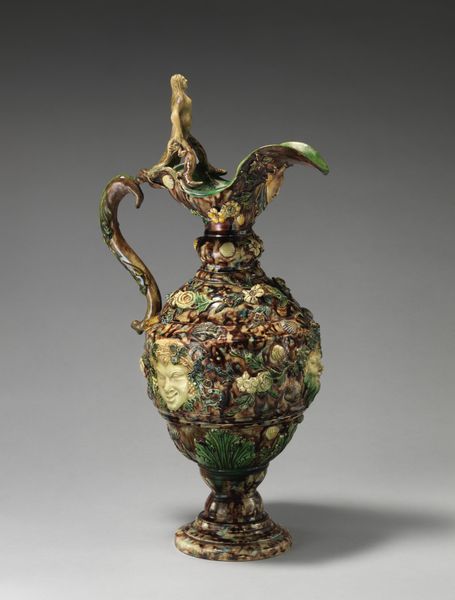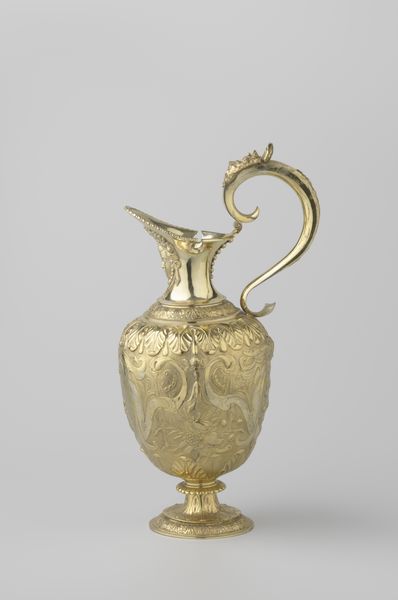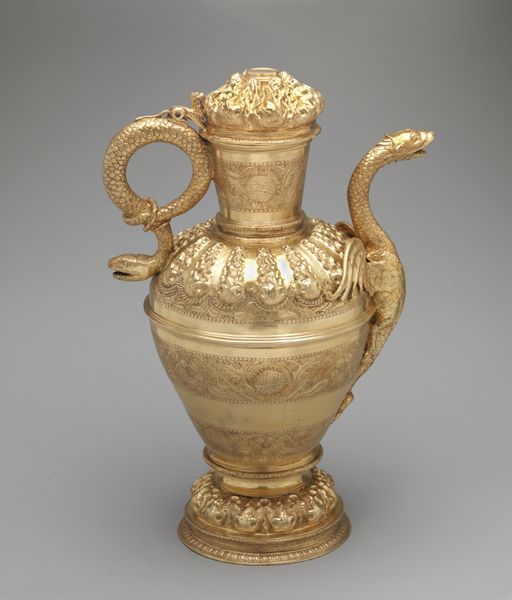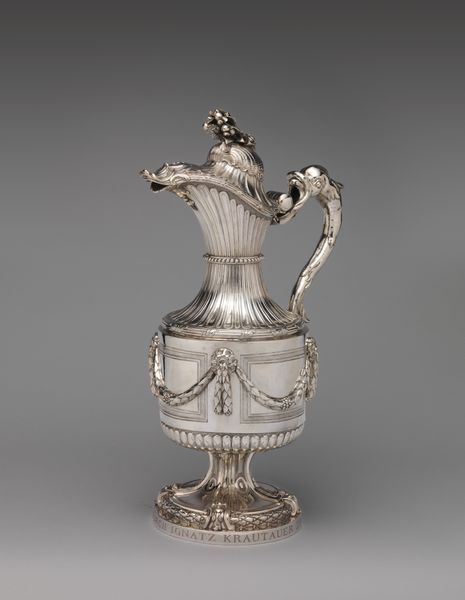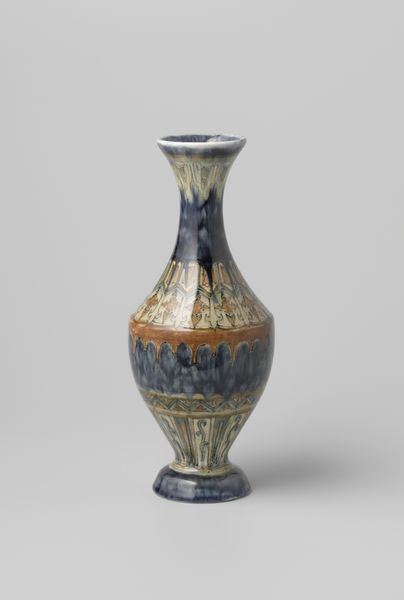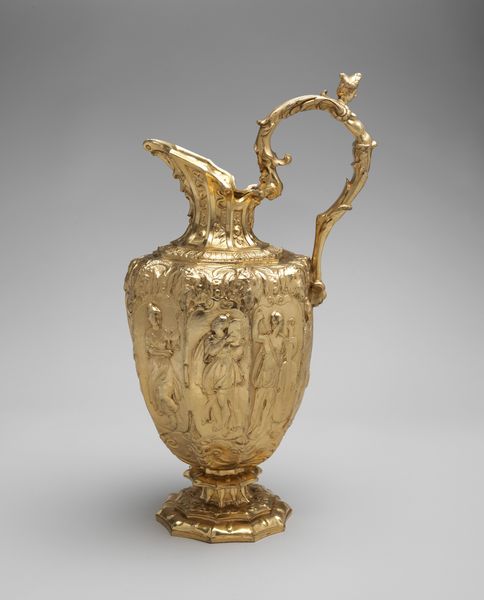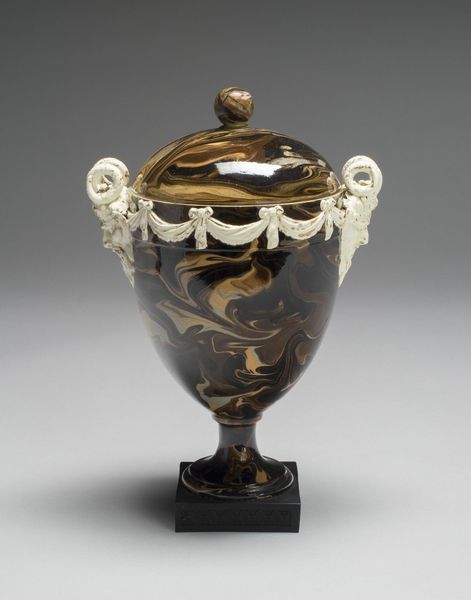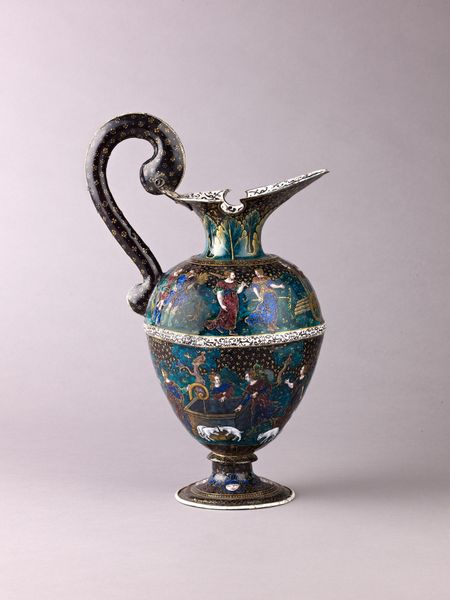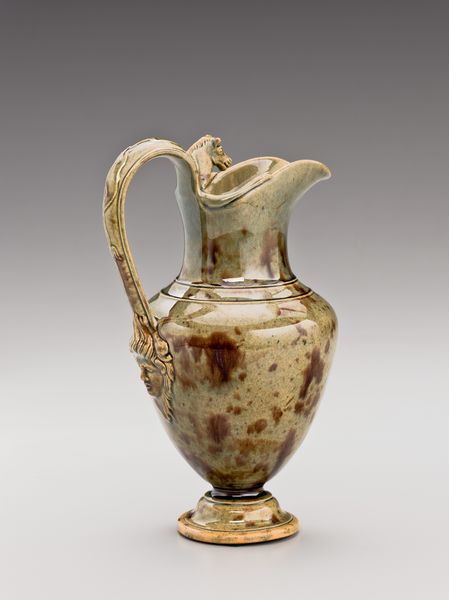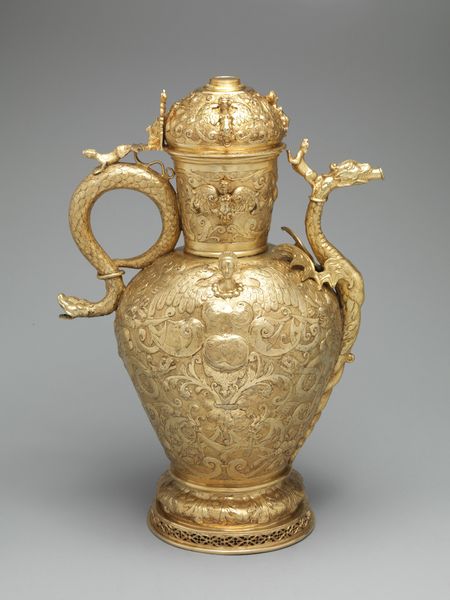
ceramic, sculpture
#
ceramic
#
sculpture
#
ceramic
#
decorative-art
Dimensions: Height: 11 in. (27.9 cm)
Copyright: Public Domain
Curator: Isn’t it striking? At first glance, the “Ewer,” created between 1764 and 1785 by Wedgwood and Bentley, presents an unexpectedly raw quality. It seems both precious and a little bit disquieting. Editor: I agree; there’s a captivating tension. That swirled ceramic—is that deliberate marbling, an aesthetic choice mimicking stone, or something else? Curator: Well, these kinds of wares existed within a complex social hierarchy. Though seemingly ornamental, they held significance within the context of eighteenth-century society, expressing elite taste and reflecting broader artistic and scientific trends. It reflects the rising fashion for antique forms and classicism in Britain. Editor: Yes, one can see echoes of the Grand Tour in the faux marble look, as affluent Brits returning home sought to replicate the experience and demonstrate their learned sensibilities. The form is, indeed, deeply rooted in class and social posturing. That contrast— between raw material, almost grotesque marbling, and highly refined neoclassical details - speaks to those emerging contradictions, especially when viewed through the lens of industrial capitalism and colonial extraction during that era. Curator: Precisely. The politics of production really comes into play. What we consider refined, like the gilded rope-like elements, would have been rooted in exploitative economic systems that supported the manufacturer and ownership of these artworks. Editor: Which, in turn, makes one contemplate the narratives we uphold when displaying pieces like this in museums. Do we unpack their connection to exploitation and cultural appropriation, or do we allow the object’s apparent beauty to veil those complexities? It invites challenging questions. Curator: Absolutely. We can’t ignore the colonial and labor conditions that facilitated such “beauty." And maybe that tension you felt at the beginning hints at our evolving understanding. Editor: Yes, it encourages us to dismantle any illusions of neutral aesthetics. This 'Ewer' becomes a tool for analyzing intersections of class, power, and taste.
Comments
No comments
Be the first to comment and join the conversation on the ultimate creative platform.
